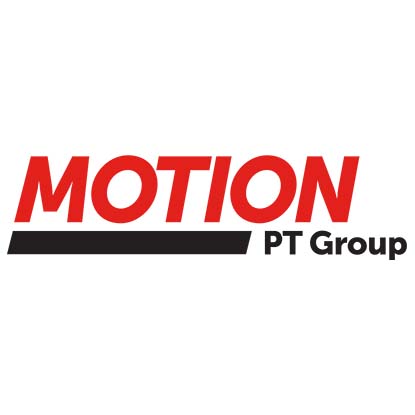
And, according to Adams, those better partnerships include the physical therapy profession.
“What I love about our profession is that it attracts a certain type of person, one who values integrity and teamwork,” said MOTION PT Group Chief Clinical Director Michael B. Fox, PT, SCS. “You go into the field of physical therapy because you want to help others and take care of people.”
MOTION’s mission is to deliver compassionate care, facilitate healing and empower patients to live their fullest lives. It’s a mission the therapists take to heart, working every day to positively impact their patients and arm them with the knowledge that they have the power to help themselves improve and live pain free.
“Our primary role in pain management lies in our ability to educate our patients,” Fox said. “With our understanding of human movement along with therapy techniques and technology, we are able to actively work with patients as opposed to passively addressing a problem, which is often the case with opioid use.”
Earlier this year, the Surgeon General spoke about the opioid epidemic in America at the American Physical Therapy Association (APTA) Component Leadership Meeting in Washington, D.C. He discussed the role of physical therapy as part of the integration of prevention, treatment and recovery across the greater health care system.
“We need partnerships, and we need collaborations,” Adams said. “And it’s an indisputable fact that physical therapists are well-positioned to change the culture around pain management.”
“What the Surgeon General said really resonated with me,” Fox said. “One of our core values at MOTION PT Group is teamwork, and we believe physical therapists function best in partnership with patients, their families and referring physicians. When we all partner and communicate together, we can give our patients the best care in the safest possible way.”
An estimated 1.5 billion people worldwide and approximately 100 million Americans are living with chronic pain, which has been linked to restrictions in mobility and daily activities along with a dependence on opioids and reduced quality of life.
While opioid drugs can be effective against pain when used safely, the overprescribing of opioids as well as their misuse has resulted in about 1.7 million people aged 12 and older having an opioid use disorder, or opioid addiction, in 2017. Opioid addiction is a chronic disease that involves compulsive drug-seeking, even when there may be negative consequences.
What negative health effects can opioids have on the body? They can depress essential parts of the brain that control breathing, heart rate and body temperature and cause them to stop functioning. According to preliminary estimates from the Centers for Disease Control and Prevention (CDC), more than 47,000 people died from an opioid overdose in 2017.
“One of the reasons people can get into trouble with opioids is when they are dealing with a difficult pain situation, it creates dysfunction within the bodily system, both in breathing and movement patterns,” Fox said. “Pain often causes people to change the way they breathe — tighter, more shallow breathing — which becomes part of the stress pattern in their chest region. Then, when the opioid drugs affect breathing control, it can make the pain worse, resulting in a chronic issue that never seems to resolve.”
CDC’s “Guideline for Prescribing Opioids for Chronic Pain” urges health care providers to reduce the use of opioids in favor of safer alternatives, including physical therapy.
“A physical therapist will address a patient’s breathing patterns, making him or her aware of any dysfunction and then teaching how to breathe more naturally from the diaphragm and not the upper chest,” Fox said. “That is just one aspect that has a positive impact on a person’s pain experience.”
MOTION’s goal is to foster normalized movement for patients as well as to educate them on how to move in a functional and healthy manner.
“Knowledge is king,” Fox said. “You can’t fix something if you don’t know about it. We want to address the pain and acknowledge it, but we let patients know we can see significant areas for improvement. We address posture, breathing patterns and any kind of weakness that has been set up in the body, which can be caused by prolonged rest, pain and dysfunctional movement patterns, creating atrophy of the muscles. Then we teach patients how to start to use those muscles properly.”
The APTA launched a national campaign to raise awareness about the risks of opioid use and the safer alternative of physical therapy for long-term pain management. The #ChoosePT campaign encourages people to choose movement over medication.
“Movement is critical to the healing process,” Fox said. “But it needs to be the right type of movement in the right way at the right pace. Physical therapy involves relationship-dependent experience between the therapist and the patient. At MOTION, we take patients through a customized plan of care step by step, and we evaluate their progress along the way. We adjust the pace of the therapy based on how they are responding to the treatment, and we work with them on what is most comfortable for them. Working with each patient on an individualized basis is what makes the therapy most beneficial.”
As some people may or may not be aware, all fifty states now have some degree of direct access. Depending on the state, individuals may be able to obtain physical therapy from a licensed physical therapist without a prescription or referral from a physician.* MOTION therapists are trained and have established knowledge, skills and expertise to know if and when to refer patients back to an orthopedist or other healthcare professional for medical care.
“Our emphasis is on one-on-one care, with highly-certified and experienced therapists providing the highest-quality patient experience supported by state-of-the-art equipment,” Fox said. “We offer our MOTION therapists in-house educational opportunities, such as guest speakers who are experts in the field of physical therapy, as well as a rigorous mentorship program. All our therapists are helpers, focused on compassion and empowering our patients — it’s a beautiful thing.”
To find a MOTION location near you and request an appointment, visit https://motionptg.com/.
*Medicare does require a physician order and some insurance companies require prior authorization and/or a physician script.




